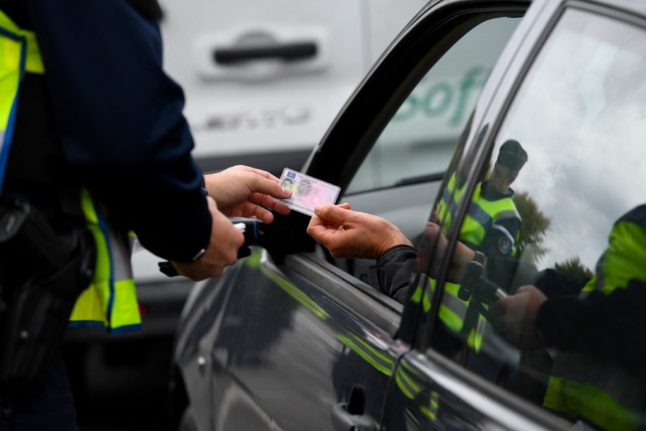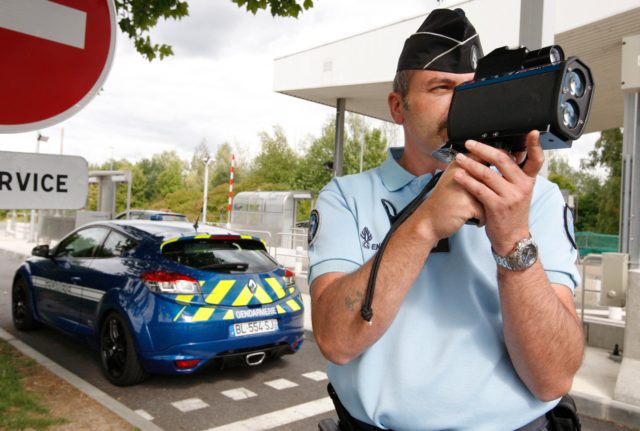Karima Belli represents the Hauts-de-France region in the European parliament, where she chairs the Committee on Transport and Tourism, and has put forward a series of proposals to overhaul driving licences across the EU in order to work towards the Bloc’s Vision Zero target – which aims to cut deaths on the road in Europe.
Her proposal aims to overhaul the EU’s 2006 agreement which standardises driving licence rules between members of the Bloc.
Aujourd’hui, je présente mon projet de rapport sur la révision des règles sur le permis de conduire dans l’UE : instauration généralisée du permis à points en Europe, d’un permis spécifique pour les SUV, limitations de vitesse…
Ce qui compte c’est de sauver plus de vies.#Thread pic.twitter.com/PenJQMX0Pf— Karima Delli (@KarimaDelli) September 18, 2023
Among the proposals are;
SUV licences – The creation of a ‘B+’ driving licence, which would only be available to drivers who have several years of driving experience. The normal B licence – which is the licence used to drive cars and vans – would only allow people to drive vehicles below 1,800kg in weight, which excludes all SUVs.
She said: “I propose to create a specific license category for driving an SUV. These vehicles, which are heavier and bulkier, are more prone to accidents. Faced with these behemoths on wheels, a pedestrian is twice as likely to be killed in a collision”.
The proposal reads: “The heavy passenger cars and pick- ups (SUVs) are not only taking up more space and are less energy efficient, consequently consuming more fuel and producing a higher level of emissions but, in terms of road safety, they are more likely to be subject to collisions than light passenger cars, with far more serious consequences. As initially designed, the B category licence is not completely suitable for the heaviest passenger cars. A new driving licence category – the B+ category – should therefore be established for cars, as well N1 vans, weighing more than 1,800kg.
“Drivers should only be eligible for this this licence category after gaining a minimum period of experience within the context of their category B licences.”
France already imposes several restrictions on SUVs on environmental grounds – heavier vehicles are taxed at a higher rate, making them more expensive to buy, and French cities including Paris and Lyon are bringing in measures to make parking more expensive for SUVs.
Extra speed limits on some licences – the maximum permitted speed for the B+ licence would remain at 130km/h, but drivers on a B licence would be limited to 110km/h, while A1 and A2 licence holders, which covers low-powered motorbikes, would be 90km/h.
At present the maximum speed limit on French autoroutes is 130 km/h in good conditions, or 110 km/in rain or poor visibility. Rural highways have a limit of either 90km/h or 80km/h depending on local decisions. In built-up areas the standard speed limit is 30km/h, although an increasing number of cities – including Paris – are imposing 20km/h limits in central areas.
Night driving limit – the proposal also suggests that young or newly-qualified drivers be banned from driving at night.
Medical examinations – licences would be valid for 10 years and then have to be renewed, and a medical would be required at the renewal. Drivers over 60 would require a medical examination every seven years, with more frequent examinations for over 70s and people with certain medical conditions.
At present the French driving licence has no upper age limit – unlike the UK licence which must be renewed once the driver reaches 70 – and there are regular calls for extra testing for older drivers.
The Green party MEP said that these measures would help to tackle road deaths in the EU, which accounted for 20,000 people last year, of which 3,000 deaths were in France.
Her proposals would need to be adopted by a majority of EU countries so could not be introduced quickly even if there is a consensus – on Thursday the German Green party moved to distance itself from her proposals.
The EU is already working on a plan for a digital driving licence – valid in all member states – that is designed to end long waits to obtain, change or swap a driving licence. There are also calls for Member States to adopt pledges to make obtaining a driving licence mire affordable.



 Please whitelist us to continue reading.
Please whitelist us to continue reading.
Member comments